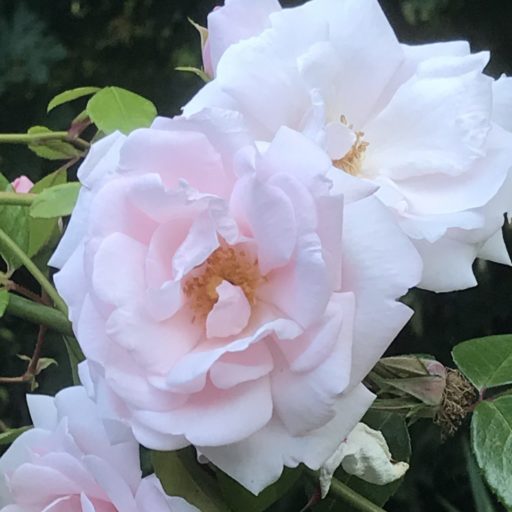Warning, this one is more deep than my normal posts, and probably unsettling. But I think it needed saying.
Tanforan was the name of a horseracing track in California. Then it became a waystation for people of Japanese ancestry prior to their internment in concentration camps in the United States. It was mentioned in the San Jose Mercury News on June 2, 1007. The headline was picked up by the newsreader I use from Google. Tanforan was one of seventeen assembly centers. From those places, people were sent to 12 Relocation or Isolation Centers…
It got me thinking…
All along the West Coast was the exclusion zone, where people of Japanese ancestry were not welcome. A map is available through Wikipedia Map. The people who were shipped out included babes-in-arms and their U.S. born parents, and elderly people whose sons and grandsons were serving in the army. People forcibly relocated — without compensation or assurance of the security of their homes and possessions. Some people died while they were gone. No one knew when they might be allowed to return home. Most who survived returned to homes and businesses that were gone. Stolen while they were away, or lost to the ravages of time.
Minidoka was the concentration camp closest to Washington state, where I live. In southwest Idaho, it was about as far in climate and culture from the lovely green and fertile valleys of Western Washington as one could get. Another close one, at Tule Lake in northern California. Nothing like home, in any sense. I haven’t been to either — they are desolate, remote locations where I have had no need or desire to travel.
It was a shameful era in United States’ History. A good summary is at Wikipedia.
I remember thinking as a child, as I read books about the forced relocations — by Germans and Soviets — of people before, during and after the second World War, how awful it must have been to be forced to move, with no idea where you were going or when (or if) you would come home. How frightening to be a child, to lose your friends and your home. How sad to be an older person, to watch everything you had worked for taken away.
As a child, I didn’t know that the same thing had happened in my own country. As an adolescent and young adult, I learned about the camps they had put Japanese Americans in, but it seemed hazy, and far away from the more publicized and dramatized horrors of the Nazis. The difference was that (as far as I know) we didn’t pretend to “arrest” them on trumped up charges. And we didn’t force them to provide free labor or kill them when they couldn’t. And we did, eventually, allow them to return without being overrun by liberators… but it took more than 50 years for the government to apologize for abusing its authority, for incarcerating innocent people with no trial, no right to appeal.
In the United States, we are taught that people are people. Even at the time these forced relocations were taking place, we were supposedly a free country, where people had certain rights and privileges based on their status as citizens or permanent residence… The color of one’s skin, the place (or places) one’s ancestors left, the religion they or their kin practice… none of these are supposed to determine whether a person is good or bad.
But, apparently, they did. And do. It has always happened to a greater or lesser extent: “driving while black” has caused many people be pulled over by the police, parents have long cautioned their children against marrying a person outside their cultural or racial heritage. But those were largely unmentioned, unwritten, unsanctioned things. At various other times in our history, minorities and recent immigrants have been openly harassed or legally restricted as to their movements and activities. As a child I read about these times, but was under the impression they were over, that our government (and our people) had learned better.
Obviously, not.
Less than a hundred years ago the government justified using lethal force against poor (often recent immigrants) people who went on strike or formed unions to demand better working conditions. Less than 70 years ago they incarcerated entire families, entire communities, based on their presumed relationship to another country. Less than 50 years ago the pledge that children say in school was amended to include the words under God in an attempt to weed out atheists…
Today we are openly asked to scrutinize people based on their clothing, their accents, their places of origin, where they worship or send their kids to school. We are asked to report any suspicious activity to the authorities. But what is suspicious to me, might be simply a difference. We are being taught to view difference as suspicious. Speaking differently, worshiping differently, dressing differently. There is harassment of people who are different by both individuals and people in the government. We are told, this sort of vigilance will make us safer.
Make who safer? Who is us? People who work? People who have bank accounts? People who own their own homes? People who have families? White people, rich people, protestant Christian people? I don’t choose these categories out of the blue… in the past these have in fact been protected, privileged classes of people, above suspicion until proven guilty. Not so for poor people, people of color, Catholics, Jews, atheists…
And I wonder, where will it all end?

Leave a Reply